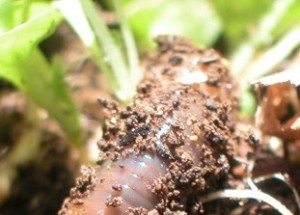Category: Fishing Worms
Blood Worms (Bloodworms)
A reader wrote to us a while ago about the prospect of breeding blood worms (sometimes – nay, often – spelled “bloodworms”). He was wondering how to set up a successful blood worm cultivation operation, and sought our assistance to that end. This may seem like a fairly obscure question (and we guess it is), but we’ve actually been asked about breeding worms before; in fact, by far the strangest question we’ve ever received was about breeding worms. However, we’ve never written about breeding blood worms in particular, and we haven’t written a lot about blood worms in general either. So, below is some basic information about blood worms, including a bit about breeding blood worms for the sake of our curious reader.
Worms for Sale! Yes, That’s Right, You Can Buy Worms
If you saw a sign that said “worms for sale,” you might think you stumbled into an alternate reality. Worms for sale? How could that be? Who on earth would actually want to buy worms? Even if an advertisement promised “cheap worms for sale” or even “free worms,” you still may think it would be crazy to take someone up on this offer.
Types of Fishing Worms
Red worms are quite easy to use as bait as they can survive a wide range of temperatures ranging from 38 to 95 degrees Fahrenheit. Once on the hook, the red worm becomes quite active.
What Do Mealworms Eat?
Mealworms are packed with protein and they are considered low fat. Surprisingly, mealworms are consumed by humans in some parts of the world.
Raising Bait Worms
Red worms feed on organic decaying matter – they have been breaking down organic waste to make natural fertilizer for millions of years, and they are non-migratory. Although red worms are non-migratory, they are adaptable to many environments.
Red Wiggler Worms
In just one day, red wiggler worms can consume organic material equivalent to their body weight to produce castings equal to 75% of their body weight. Red wiggler worms can convert organic materials into high quality humus, which will provide gardens with earthworm castings, which is considered a complete (and powerful) natural fertilizer.
Types of Beetle Larvae
Beetle larvae can be found in moist areas, compost piles, streams, slow moving waters, rivers, dams and lakes where they can find food easily.
K&E Plastic Worms
K&E plastic worms are mostly 5 ½ inches long and they come in all colors such as black, black and white striped, black and red, black and yellow, natural, pink, orange/yellow/natural, chartreuse, grape (purple), brown, wine, and pumpkinseed
Creme Plastic Worms
Today, Crème Lure Company still manufactures its original Crème Plastic Worm lineup as well as newer products such as Lit’l Fishie, Mad Dad, Shrimp Tease, and Devil’s Tongue.
Plastic Worms
There are a wide variety of artificial and plastic worms on the market that can be just as effective as live bait. Although there are many artificial and plastic worm retailers to choose from, one of the world’s top artificial worm retailers is Mann’s Bait Company.
Raising Fishing Worms
Not all worms thrive under identical conditions, so its best to stick to one type of worm. It is also good to stick to one type of worm if you are interested in maintaining a small scale “worm farm.”
Why Do Birds Eat Worms?
Birds crave protein, but birds eat worms for a variety of other reasons as well.
Phoenix Worms
The scientific name for the Phoenix Worm is “hermetia illucens linnaeus.” It is the larvae of the soldier fly. The larvae has a soft, bullet-shaped body. The body is flattened and it is covered with firm, tough skin.
The Basics of Blood Worms
Not to be confused with the leech, which is a carnivorous or bloodsucking worm, the bloodworm is the larvae of…
Catalpa Worm
The catalpa worm is the larva of the sphinx moth. This black and yellow caterpillar infests the catalpa tree, feeding…
Are Bristleworm Stings Dangerous?
The bristles or “setae” of the bristleworm are so tough that they can penetrate skin, causing a painful “sting.” Depending on the type of bristleworm, the sting can cause burning, inflammation, numbness, pain, redness, and swelling at the bite or sting site.
Bait Worms
Believe it or not, the market for bait worms is huge in the U.S. and in most other parts of the world. It is estimated that in the state of Maine alone, more than 200 tons of bait worms are produced each year and in the UK, more than 700 tons are produced each year for both commercial and personal use.
Catalpa Worms
Catalpa worms are recognized as pests when they defoliate catalpa trees. They are also prized as bait because catalpas emit a green fluid that’s aromatic and attractive to fish.
Blood Worms
The term blood worms covers two categories: those that are insect larvae and those classified as true worms. Both are called bloodworms because they have a blood-like substance in their bodies. Many fish species find either type of blood worm simply irresistible!
Woolly Worm Flies
Neither worms nor flies, wooly worm flies are fishing lures that replicate a variety of insects. Wooly worms flies have been popular for about 300 years.





